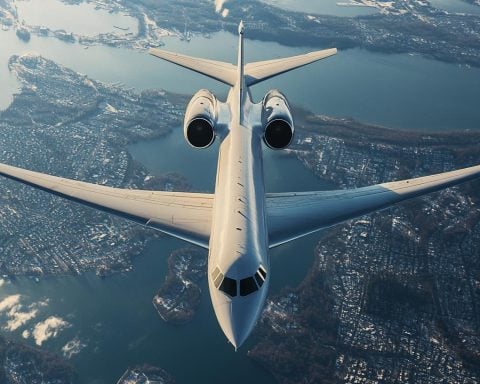In a recent disclosure, a former NASA astronaut recounted a startling encounter with unidentified aerial phenomena (UAP) while on a routine flight. This intriguing event unfolded in August 2024 when Leroy Chiao, a former NASA astronaut, was piloting his private plane from Colorado to Houston.
Strange Sighting at 9,000 Feet
During his flight at an altitude of 9,000 feet, Chiao observed two mysterious metallic orbs. He described them as approximately three feet in diameter. These orbs zipped past his aircraft, maintaining a close distance of just 20 feet. Chiao acknowledged that the encounter happened so abruptly, he barely had time to react.
Untraceable Objects
Remarkably, neither radar systems nor Chiao’s plane’s transponder recorded any indication of the objects. Likewise, air traffic control confirmed the absence of other aircraft in the vicinity during the incident. Chiao found the experience to be both baffling and concerning.
More Than Meets The Eye?
While Chiao suggested these orbs might be part of a military program, he admitted uncertainty about their origin. The sighting sparked increased interest as it coincided with a spike in drone sightings across the United States.
With numerous unexplained drone incidents reported in New Jersey and beyond, federal agencies, including the FBI and Department of Defense, are investigating over 100 credible sightings. Despite public alarm, officials maintain there is no indication of a threat to national security. Regardless, lawmakers continue to debate potential new regulations for drone activities.
Astronaut’s UAP Encounter Fuels New Debate on Aerial Phenomena
In August 2024, a routine flight took a mysterious turn for former NASA astronaut Leroy Chiao when he encountered unidentified aerial phenomena (UAP). This unexpected event in the skies between Colorado and Houston has sparked renewed interest in aerial mysteries and led to broader discussions across various domains.
Emerging Security Concerns and Investigations
The encounter highlighted potential gaps in current radar and monitoring systems, as the metallic orbs that Chiao witnessed went unrecorded by traditional tracking methods. This incident aligns with a surge in drone sightings and unexplained aerial activities, prompting federal investigations by the FBI and the Department of Defense. Over 100 credible sightings are currently under scrutiny, raising questions about national airspace security.
Technological Implications and Innovations
The lack of detectable traces from the orbs suggests the possibility of advanced technologies, either domestic or foreign, that are invisible to standard radar. This scenario increases interest in upgrading current radar systems to accommodate emerging threats or phenomena. Innovations in stealth and drone technology may hold the key to understanding the underlying mechanisms of such sightings.
Balancing Regulation and Innovation
With ongoing debates among lawmakers about new regulations for drone activities, there’s a delicate balance to maintain between fostering technological innovation and ensuring public safety. The rise in unexplained aerial events has spurred discussions on whether existing policies adequately address the complexities of modern aerial technology.
The Science Behind UAPs: Trends and Research Directions
As UAP sightings like Chiao’s gain attention, more scientists have begun to call for thorough scientific investigations to understand the physics and technology involved. The need for multidisciplinary studies integrating aerospace technology, atmospheric science, and national security is crucial to understanding UAP phenomena scientifically and comprehensively.
Predictions on Future Aerial Disclosure
Experts predict that the increased focus on UAPs might bring about technological advancements in detection and analysis of such phenomena. This could eventually lead to more definitive public disclosures, as government agencies may develop new technologies and protocols aimed at revealing the nature and origin of these unexplained sightings.
For more insights into innovations in aerospace and exploration, visit NASA.


















